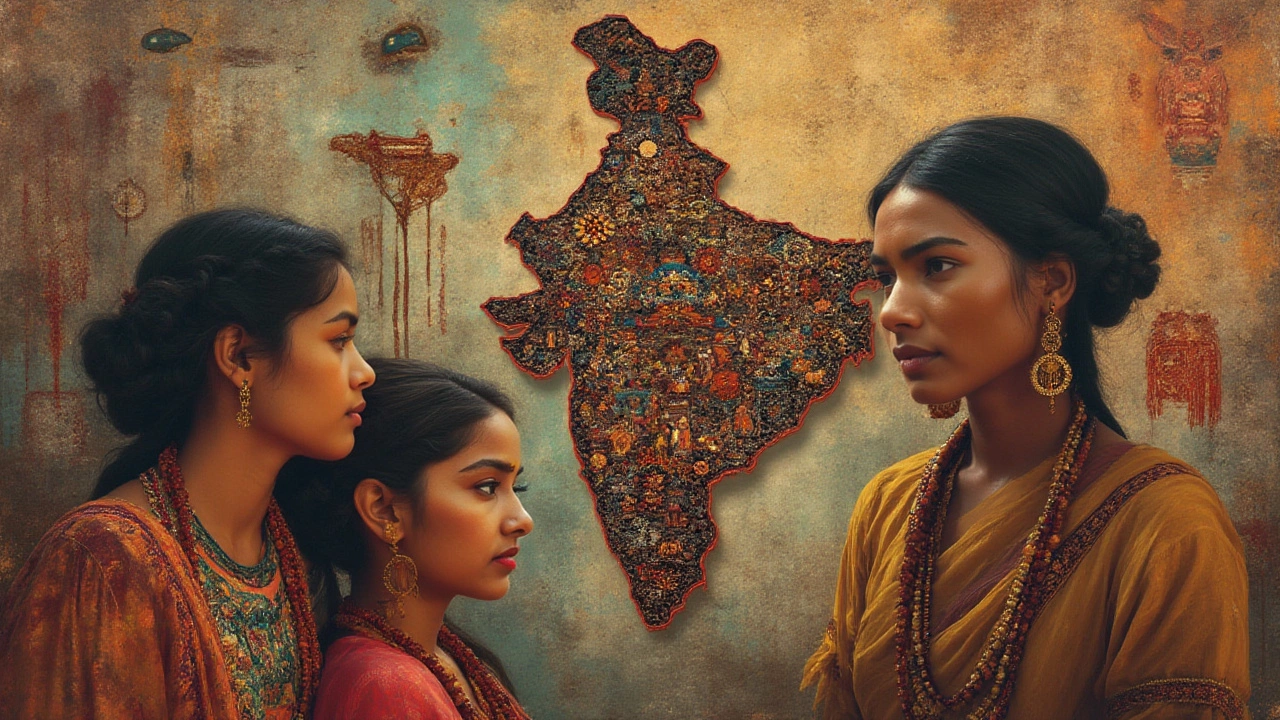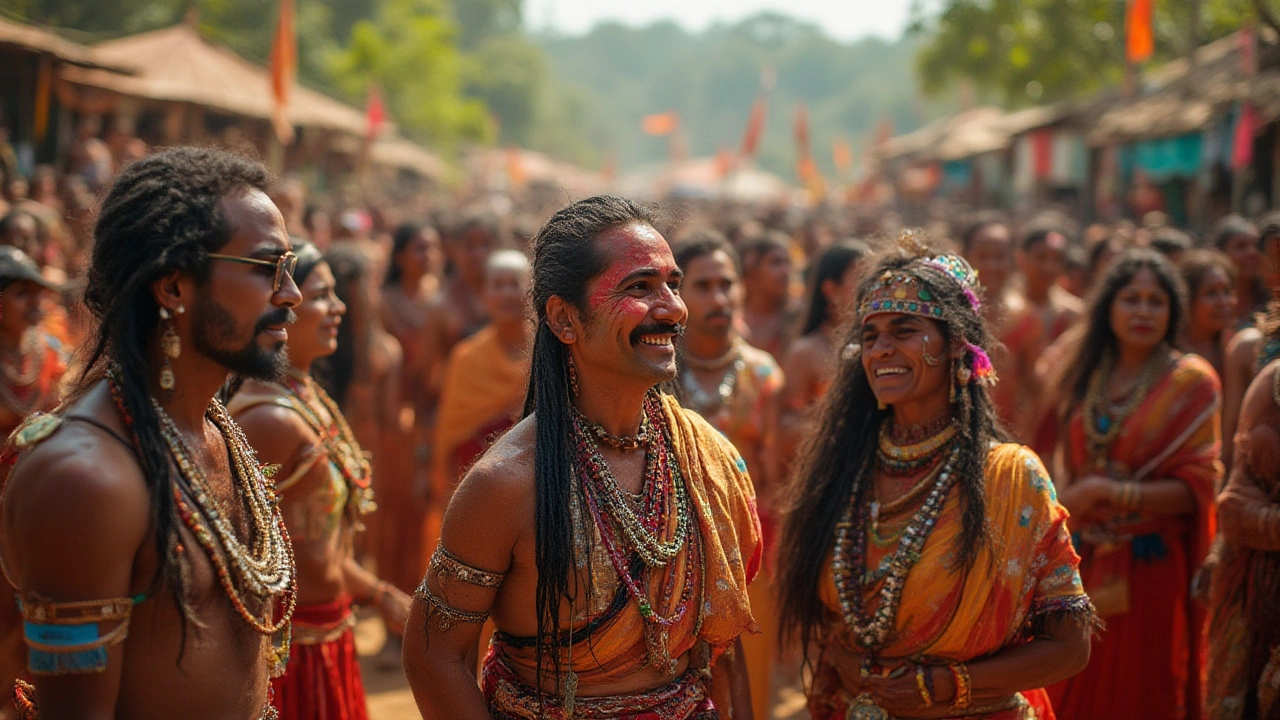Have you ever found yourself staring at a form, pausing at the checkboxes labeled “race” and “ethnicity,” and wondering where “Native Indian” fits in? This isn’t just a paperwork problem—it’s about real identity and how people see themselves, and even how others treat them. The debate around Native Indian identity has been a puzzle for decades, tangled up with history, science, politics, and even personal stories.
The Roots and Evolution of the Term “Native Indian”
To jump right in: what exactly does "Native Indian" mean, and where did the term even come from? The phrase “Native Indian” in North America is a bit of a misnomer from the start. When Christopher Columbus landed in the Caribbean in 1492, he mistakenly called the indigenous people “Indians,” believing he’d reached the shores of India. That label stuck for centuries, sewn into everything from treaties to school textbooks. Of course, the people themselves had countless unique names—Cherokee, Navajo, Cree, Ojibwe, and so many more—but “Indian” became a catch-all term forced upon them by outsiders.
Move over to India itself, and the word “Indian” is a completely different story. There, it just means anyone from the Republic of India—a nation with a stunning diversity of cultures, languages, and traditions. So, we’re already seeing a collision of identities and geographies wrapped up in a single word. For this article, though, let’s focus on “Native Indian” as it’s used to refer to the Indigenous peoples of North America. Today, many prefer terms like “Native American,” “First Nations,” “Indigenous,” or even their tribal names, which actually respect their unique cultures and histories. But you still hear “Native Indian” quite a lot, especially in official and legal language, pop culture, and sometimes even within Native communities themselves.
That leads us into how this label has evolved. Throughout the 20th and 21st centuries, Indigenous activism pushed back on the use of “Indian.” Institutions like the Smithsonian’s National Museum of the American Indian embraced it in their name because of its legal and historic importance, but they also educate the public about diverse Indigenous cultures and their proper names. In Canada, you’re more likely to hear “First Nations,” “Inuit,” and “Métis,” each with their own distinct meaning. Meanwhile, the US Census employs “American Indian or Alaska Native,” allowing people to self-identify within multiple categories.
This evolution of language signals a deeper question: are Native Indians considered a race or an ethnicity, or does the term even fit either category neatly? Let’s dig deeper into that tangle.
Race, Ethnicity, and the Case of Native Indian Identity
Think about how society uses the words “race” and “ethnicity.” At first glance, they seem interchangeable, but they’re actually pretty different—especially in academic and legal settings. “Race” tends to mean groups with similar physical traits—like skin color or facial features—often (and incorrectly) assumed to be rooted in genetics. “Ethnicity,” on the other hand, deals more with cultural background, language, nationality, shared history, and traditions. Sounds straightforward, but real life rarely plays by textbook definitions.
When it comes to Native Indian identity, classifying it strictly as a race is problematic. Indigenous peoples share some physical traits due to shared ancestry, but there’s far more diversity in appearance than people assume. More importantly, racial categories are artificial—they were created by governments, scientists, and census-takers to organize people, not to reflect natural, meaningful lines between groups. So, while official documents may enlist “American Indian or Alaska Native” as a race, very few Native people define themselves that way in a personal sense. For example, a Lakota might see their tribe, language, and cultural heritage as more important than a rigid racial category.
Ethnicity is a better fit if you want to capture shared history, storytelling, foodways, language, and traditions. You can trace “ethnic” markers of Native Indian identity, like powwows, traditional dress, spoken languages (Navajo, Dakota, Mohawk, etc.), and distinct religious practices. But even here, using ethnicity as a blanket term gets tricky. There are 574 federally recognized tribes in the United States, and over 600 in Canada, each with unique customs. It’s kind of like saying “European” is an ethnicity and expecting an Irish person and a Greek person to share deep cultural ties.
| United States | Canada | India (for context) |
|---|---|---|
| 574 federally recognized tribes | 630+ First Nations, Inuit, and Métis groups | 2000+ ethnic groups |
| 2.9 million identify as American Indian/Alaska Native alone (2020 Census) | 1.67 million identify as Indigenous (2021 Census) | Many international Indian communities, but not labelled as Indigenous |
Still, the law keeps things complicated. Tribal sovereignty in the United States depends on federal recognition—legal status, not self-identification, decides if a community receives certain rights and resources. And in many cases, blood quantum (the fraction of “Indigenous blood” someone is supposed to have) determines who is considered Native for certain legal purposes, blending race, ancestry, and legal paperwork in ways that make the whole thing even messier. Blood quantum laws, first imposed by the US government in the 19th century, are criticized for dividing Indigenous communities and eroding traditional concepts of kinship, which had nothing to do with genetics or race, but everything to do with belonging and participation in the community.
So where does that leave us? If you want a simple answer, most scholars (and a growing number of Native activists) argue that Native Indian identity isn’t just race or ethnicity. It’s a peoplehood rooted in culture, language, history, law, and personal and communal self-definition. It resists easy labels, and that might be exactly the point.

Why the Distinction Matters: Real-Life Impact
All of this probably sounds pretty academic, but here’s where it gets real: these labels have actual consequences. How a country or an institution defines Native Indian status affects everything from citizenship rights to access to healthcare, education, preservation of language, and even land rights.
For example, if you’re Native in the US, you can be enrolled in a federally recognized tribe, which comes with both privileges and some strings attached. These include access to Indian Health Service (IHS), the right to live and vote on tribal land, eligibility for certain scholarships, and other programs. But eligibility often relies on tribal enrollment, which sometimes asks for proof of genealogy or “blood quantum.” That means someone raised in the culture, who speaks the language and knows the ceremonies, could still be excluded if they don’t meet paperwork requirements. The flip side? People with legitimate ancestry but little connection to the culture or community might still qualify legally. It’s like a game whose rules keep changing depending on where you stand.
That’s not just a bureaucratic headache. According to studies, Native Americans and First Nations peoples face higher rates of poverty, health issues like diabetes and heart disease, and mental health struggles compared to the average population. Mislabeling or erasing their identities makes it even harder for them to get support tailored to their realities. Cultural misunderstanding also creeps into mainstream media, where stereotypes—like the “fearless warrior” or “wise elder”—flatten real people into clichés.
Education is another battleground. Many school curriculums still use outdated language like “Indians,” and skim over the reality that there are hundreds of distinct nations and cultures. But when schools get it right—inviting Indigenous speakers, celebrating Native American Heritage Month, teaching languages like Cherokee or Ojibwe—it transforms not just Native students’ self-esteem, but also helps everyone understand the layered richness of Indigenous life.
Then there’s the issue of cultural preservation. Across North America, dozens of Native languages are considered endangered. Kids today might be more likely to speak English or French, depending on where they grow up. But efforts to revive these languages and traditions are gaining steam, with tribal schools, adult language classes, and even apps created for learning Navajo or Cree. The push to protect sacred lands and burial sites—often threatened by pipelines or development—relies on both legal recognition and strong, clear identity as a people with inherent rights.
Labels might seem like small stuff, but they shape policies, funding, and whether cultural practices survive or fade out. That’s why you’ll find Native leaders, activists, and elders insisting on accuracy and respect, urging the wider world to see past checkboxes and see Native Indian, First Nation, and Indigenous identities as living, breathing cultures.
What’s the Best Way to Talk about Native Indian Identity Today?
So, you’re still at that form, or maybe you’re in a conversation, wanting to be respectful but not sure what to say. What’s the right word? Here’s a cheat sheet that comes straight from Native voices and thoughtful discussion in 2025.
- Ask first—but don’t over-complicate it. If you’re talking one-on-one, most folks appreciate genuine curiosity and respect over perfection. “How do you prefer to be identified?” isn’t weird, it’s considerate.
- Use specific tribal names when you can. Saying “Navajo artist” or “Cree chef” is much better than generic terms.
- In Canada, use “First Nations,” “Inuit,” or “Métis” as appropriate. In the US, “Native American,” “American Indian,” or “Alaska Native” are common and accepted in most formal settings. “Indigenous” covers everyone and is usually a safe, respectful term, especially when talking about global native peoples.
- Avoid outdated language like “Red Indian,” which many find offensive.
- Remember that not everyone fits into one box. A person might identify with their tribe, with being Native, with a country, or with mixed heritage.
- Don’t assume what someone “should” look, sound, or dress like.
Here’s something interesting—language around identity is always changing. Ten or twenty years ago, certain words might have seemed fine that now have fallen out of use. Pay attention to what Native people themselves are saying, writing, and teaching. That’s the best way to learn and show respect.
So, is Native Indian a race or an ethnicity? The answer is: it’s both, it’s neither, and it’s more. It’s a living identity shaped by culture, language, history, community, and—maybe most importantly today—self-definition. Don’t put it in a box. Speak with care, curiosity, and a willingness to learn. That’s what real respect looks like, on forms and beyond.
